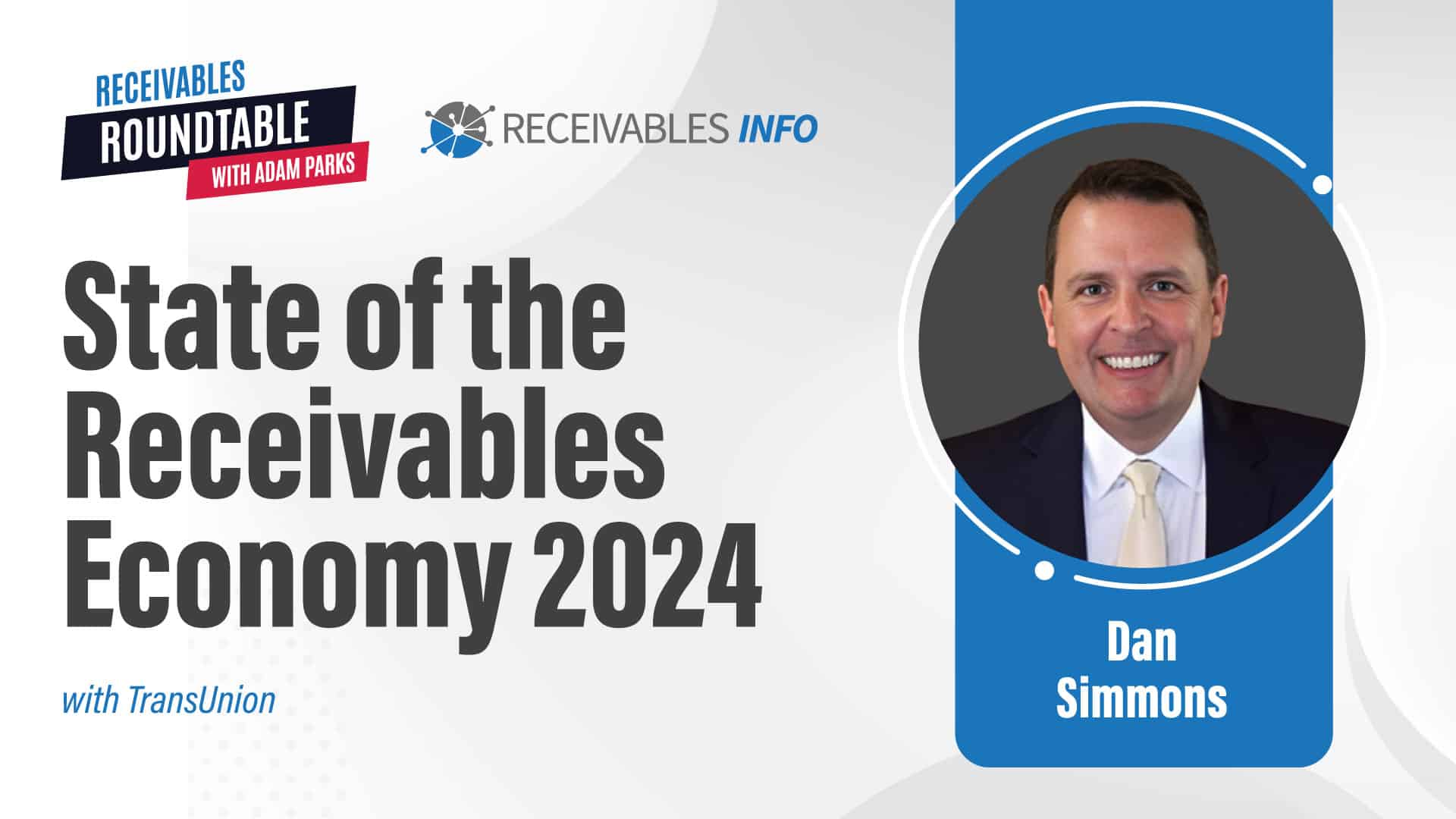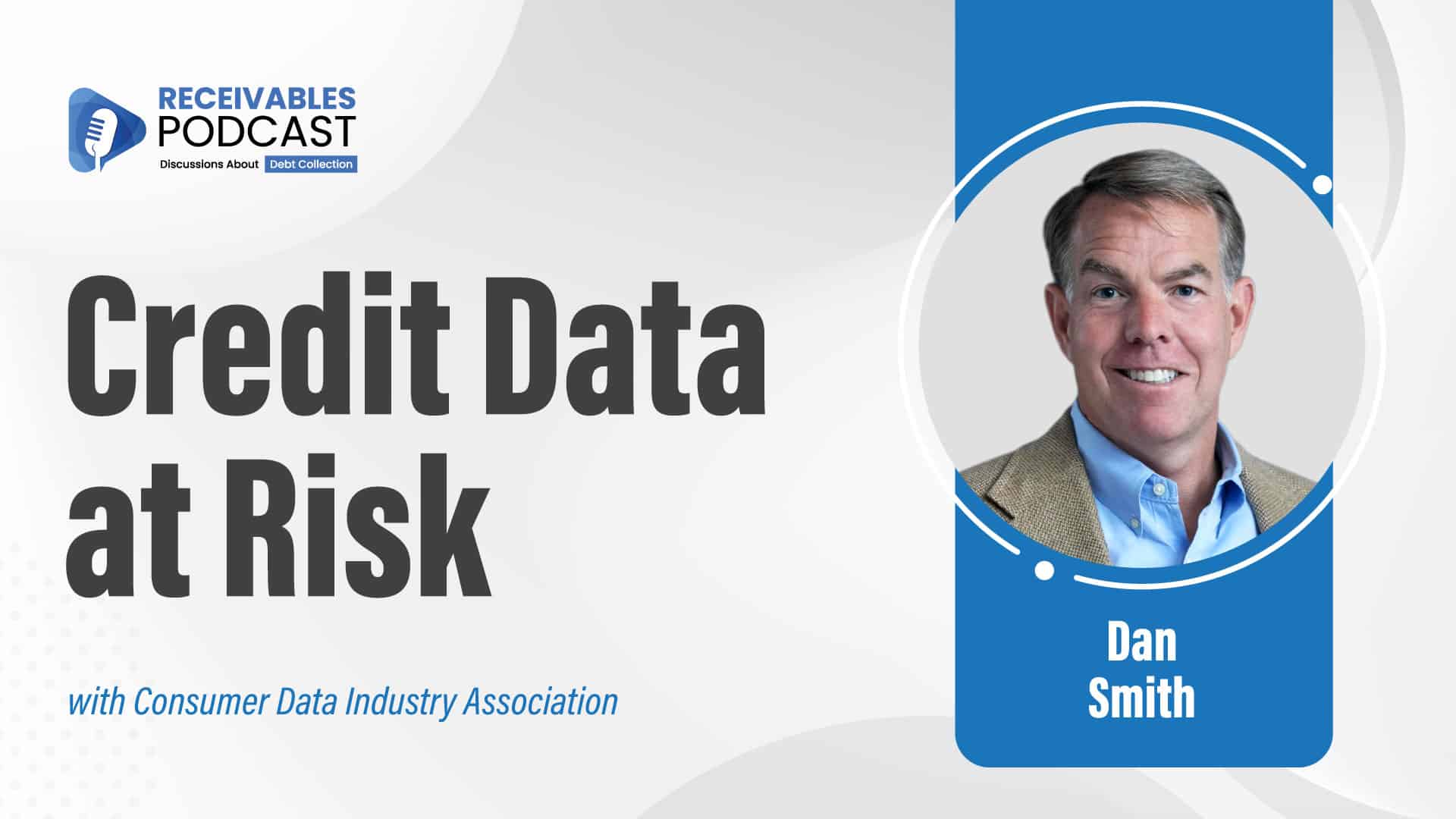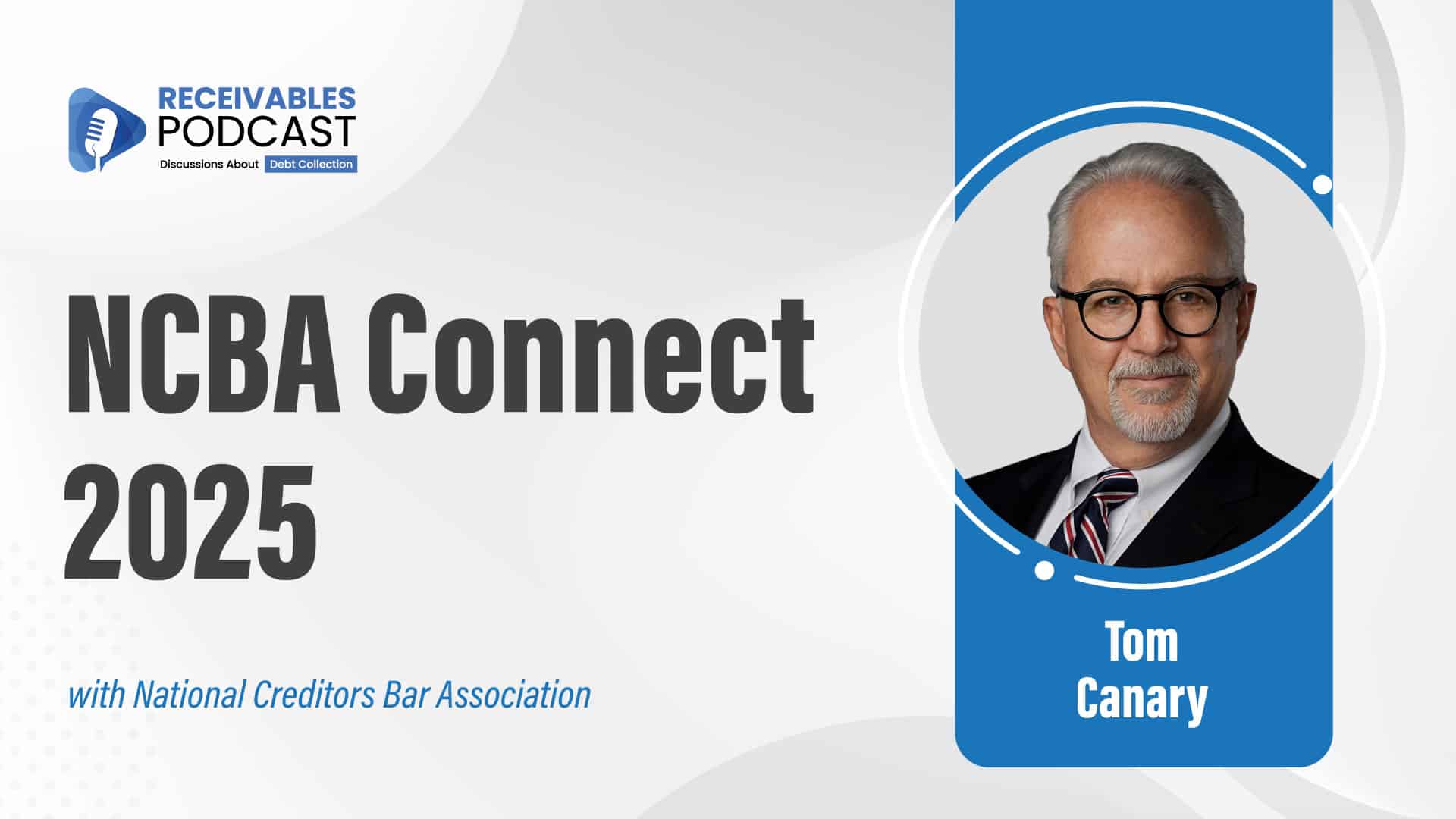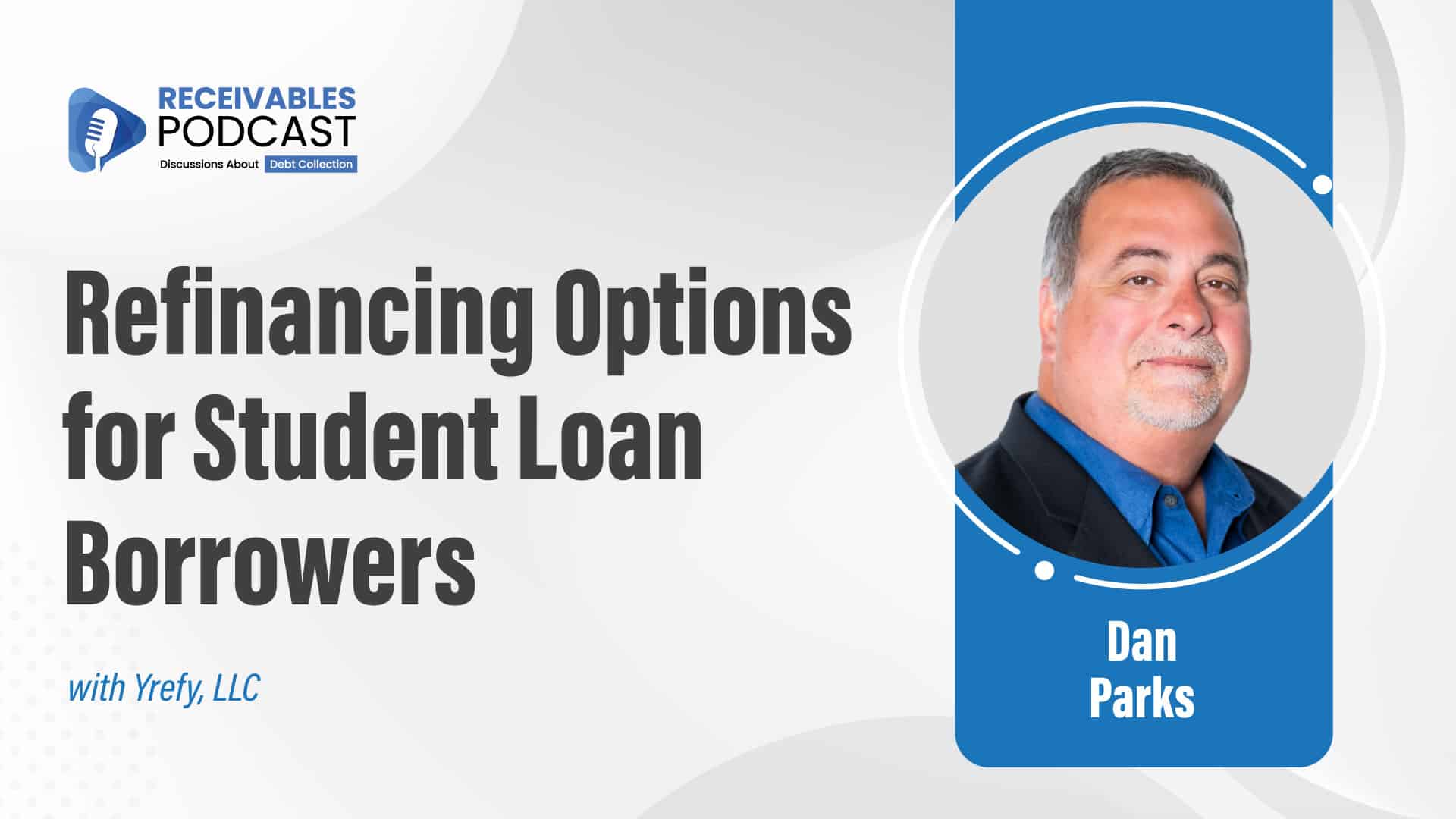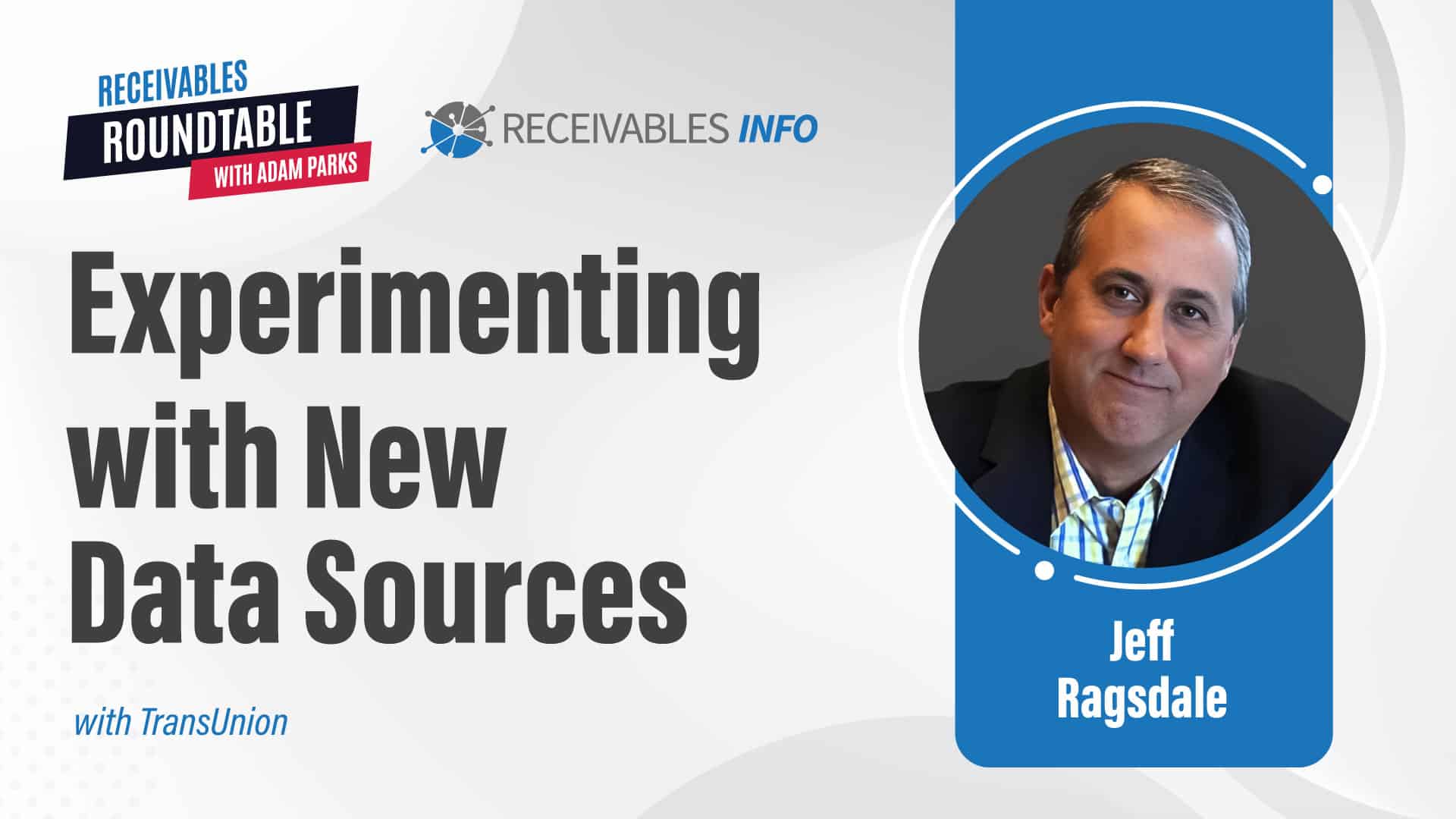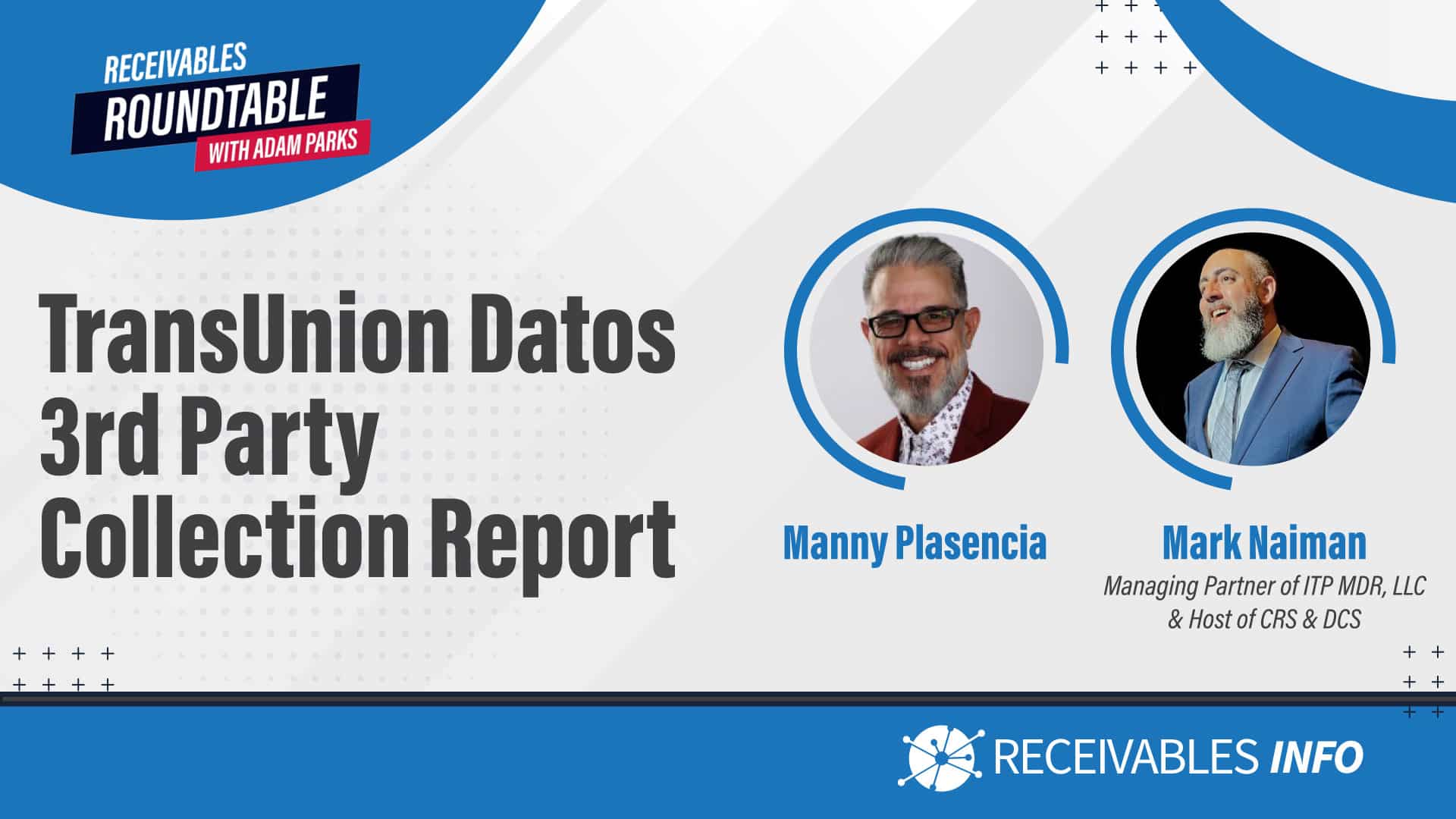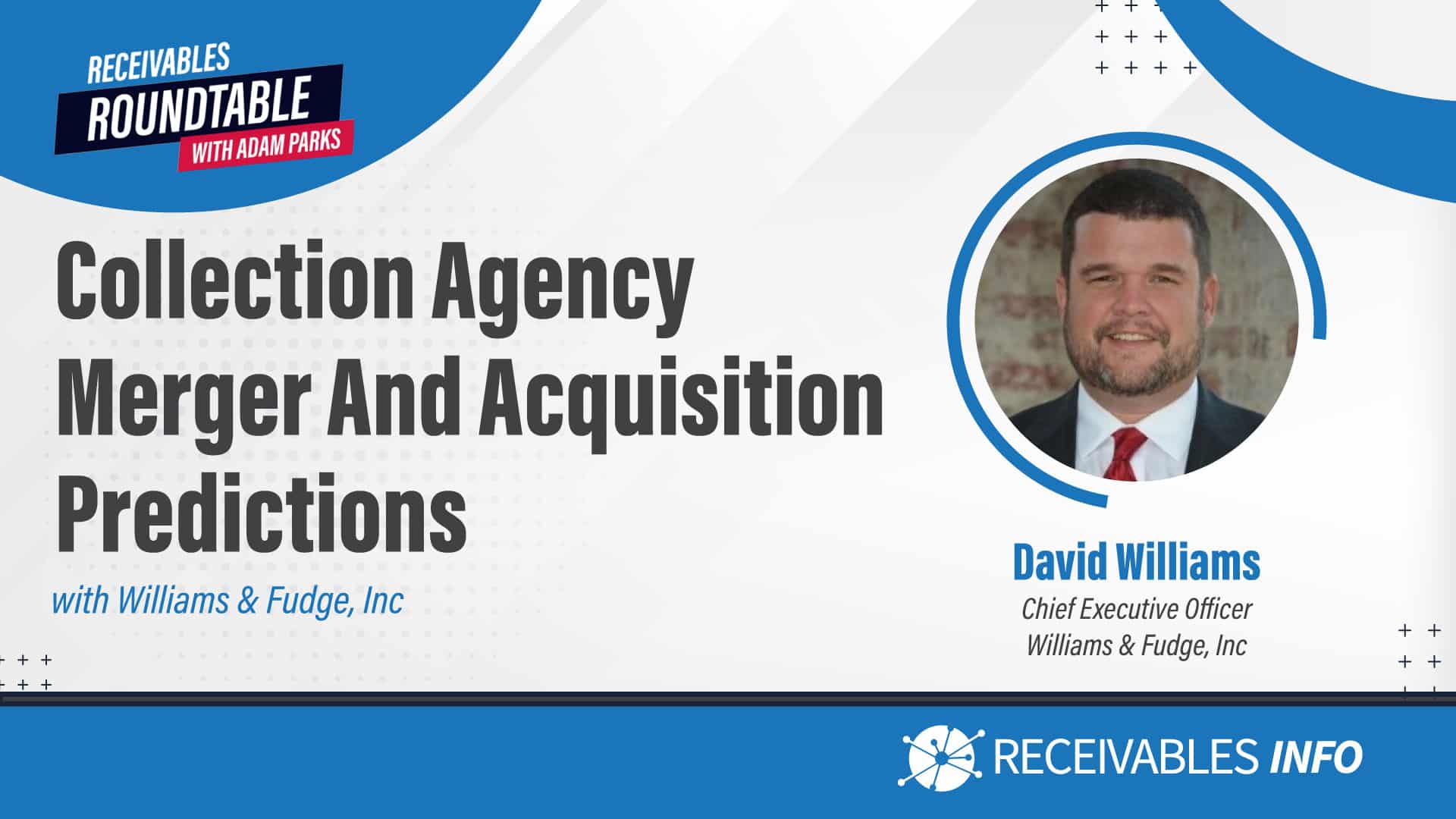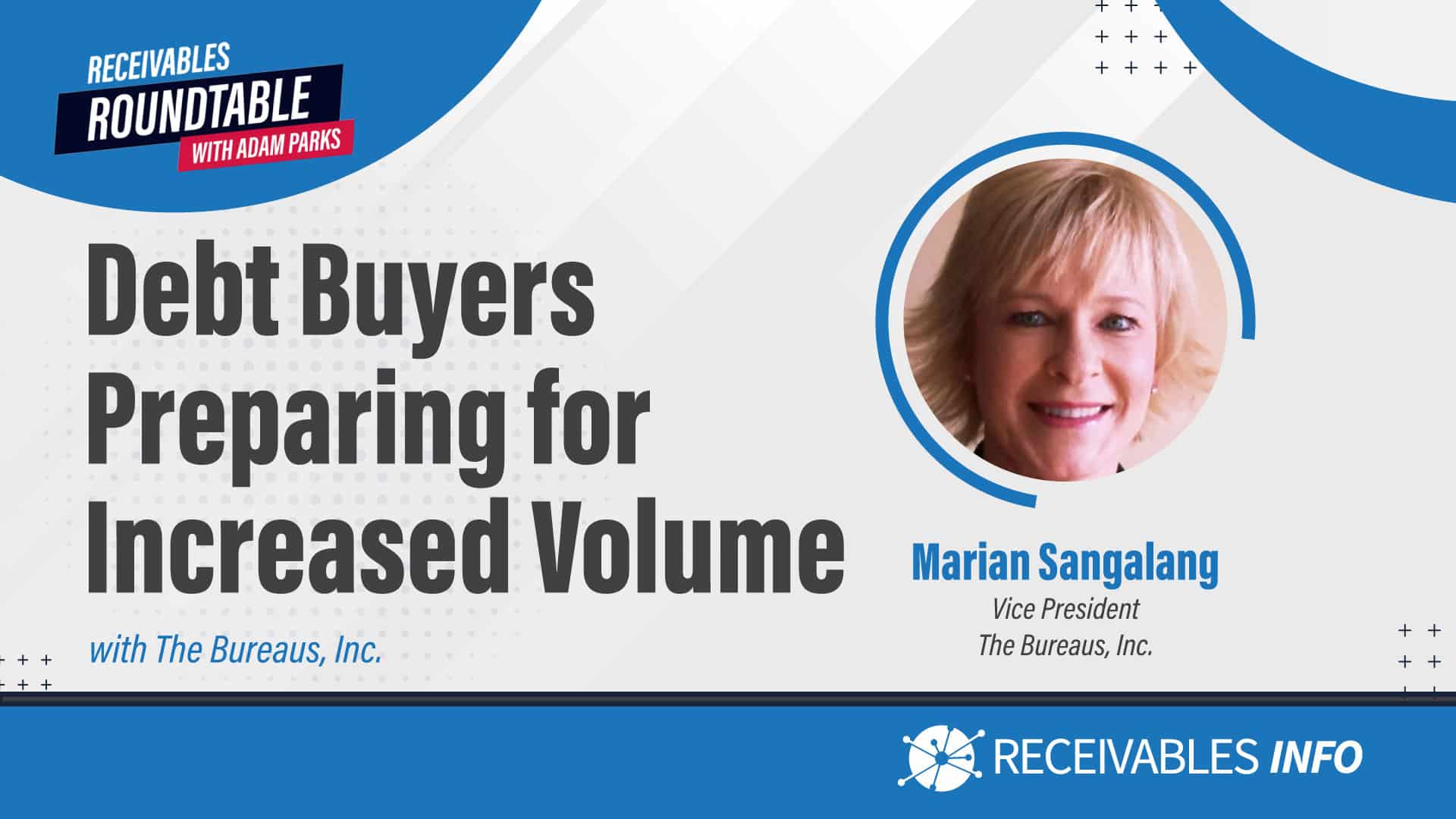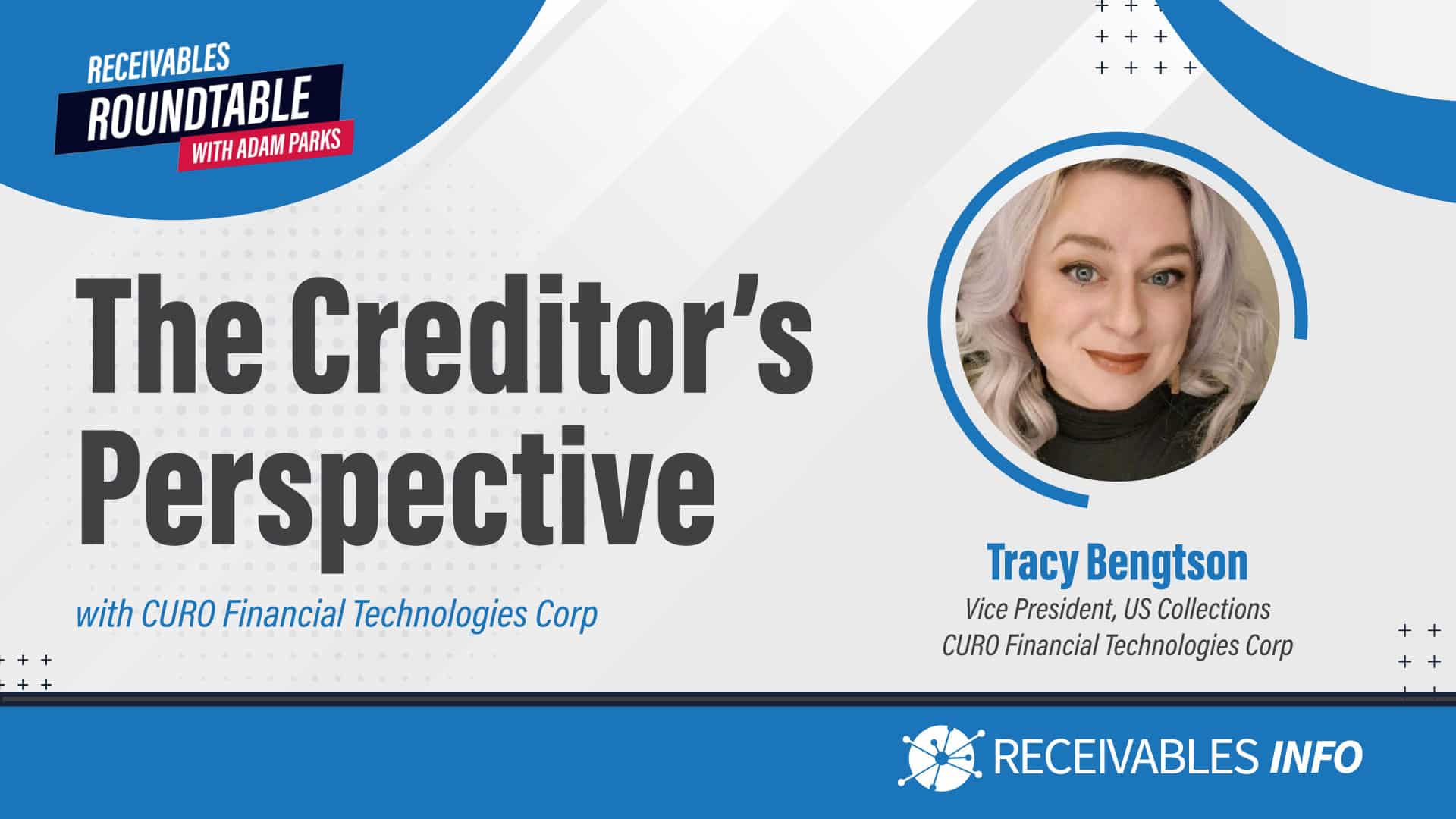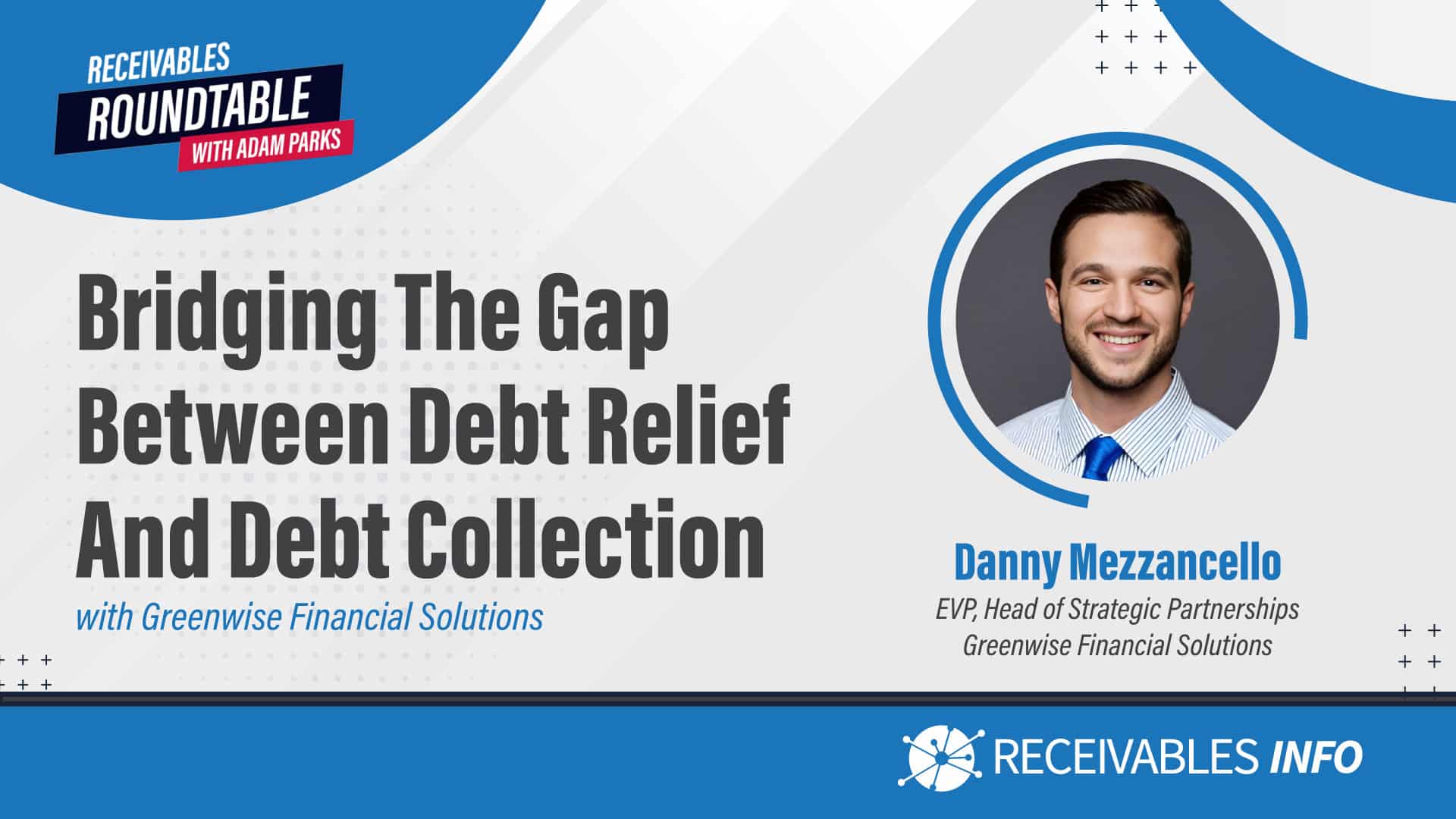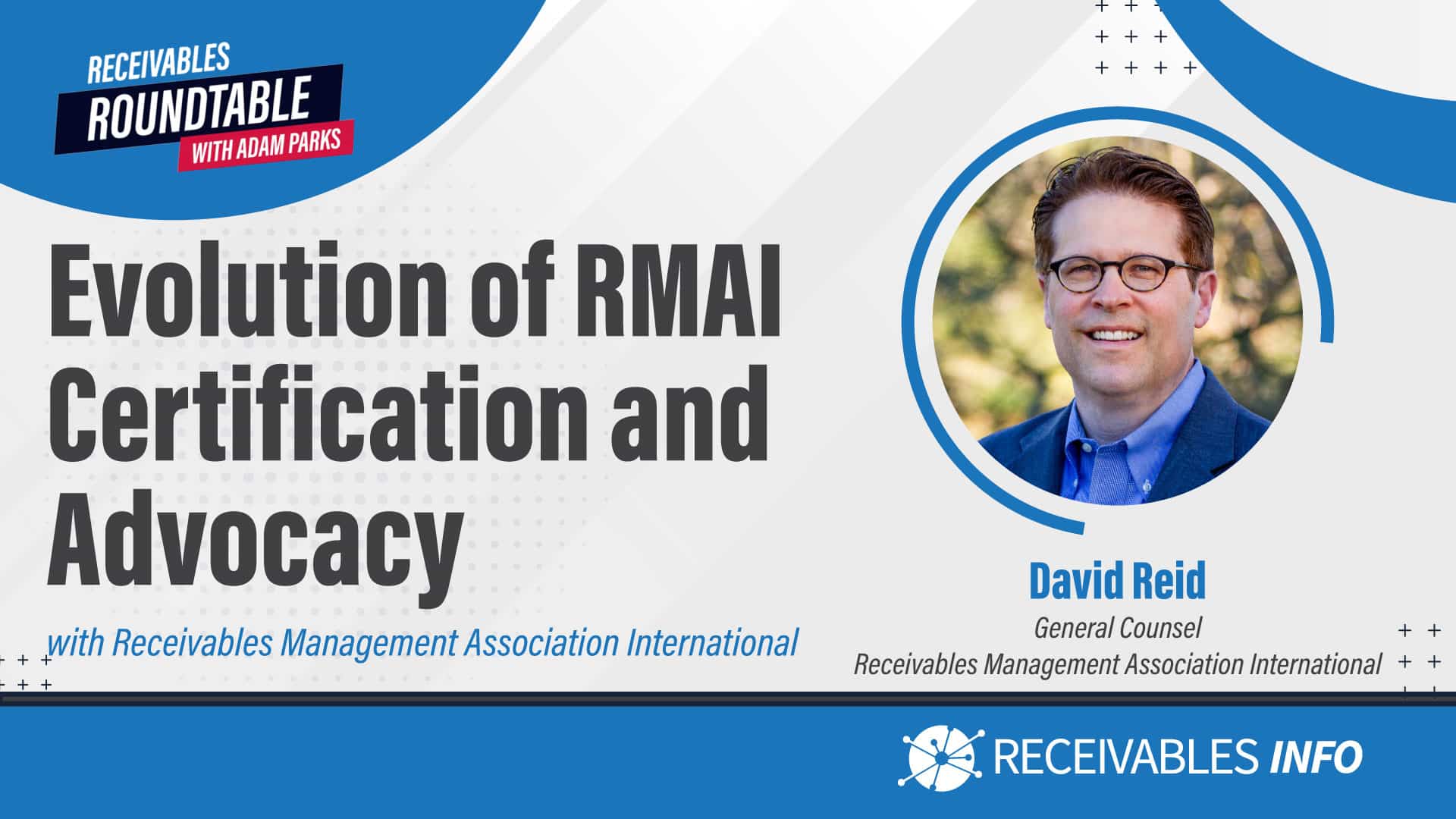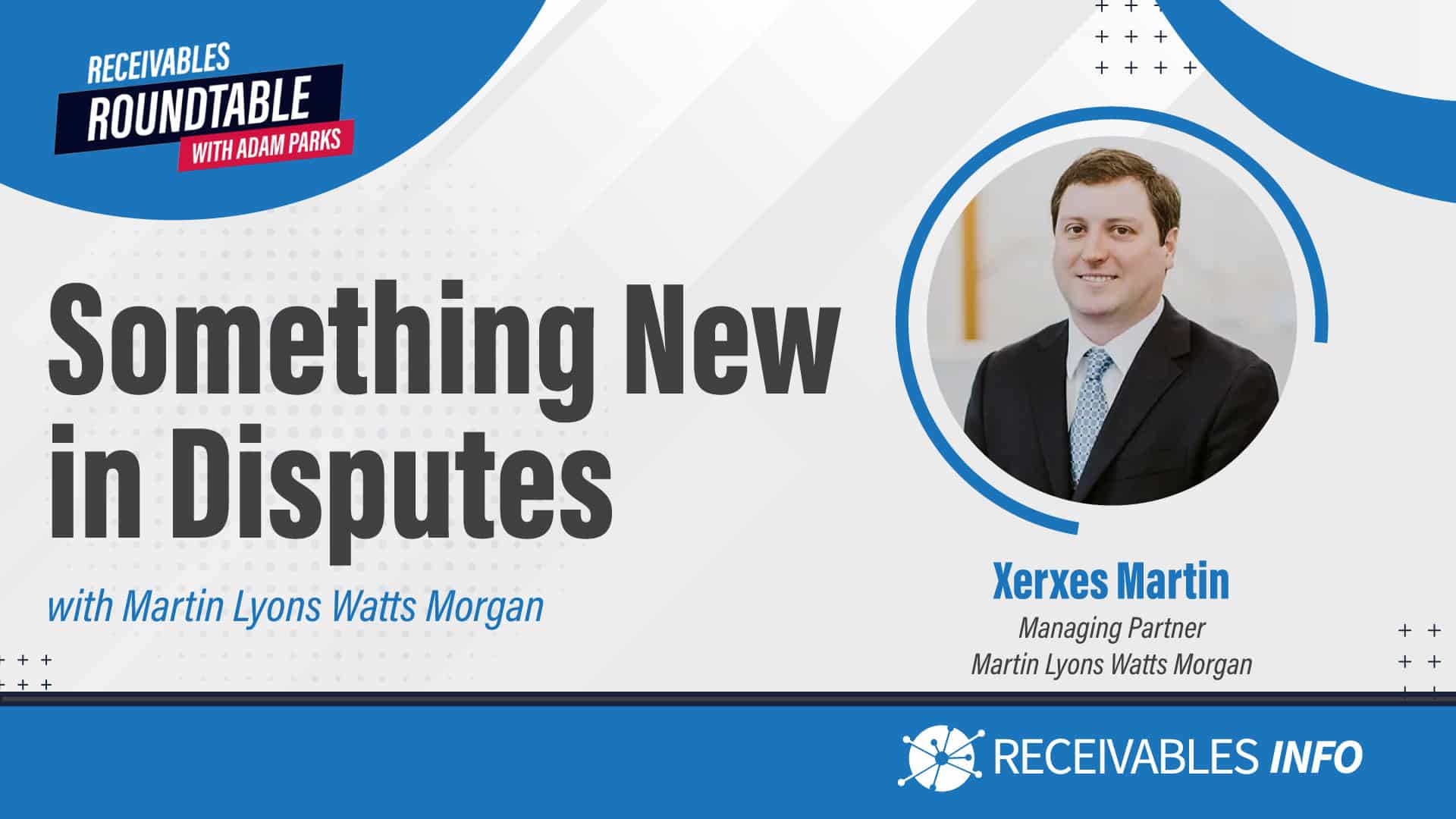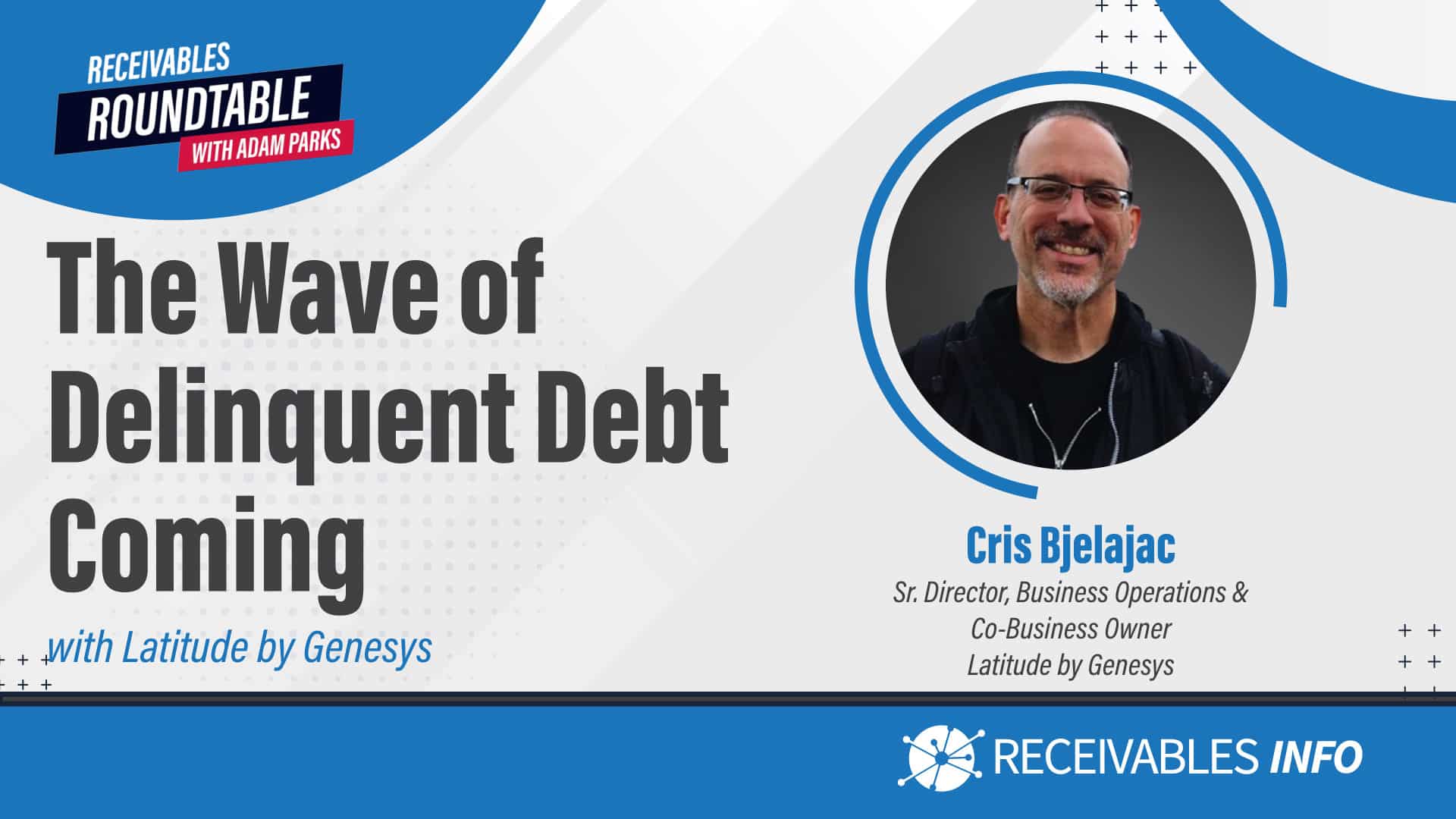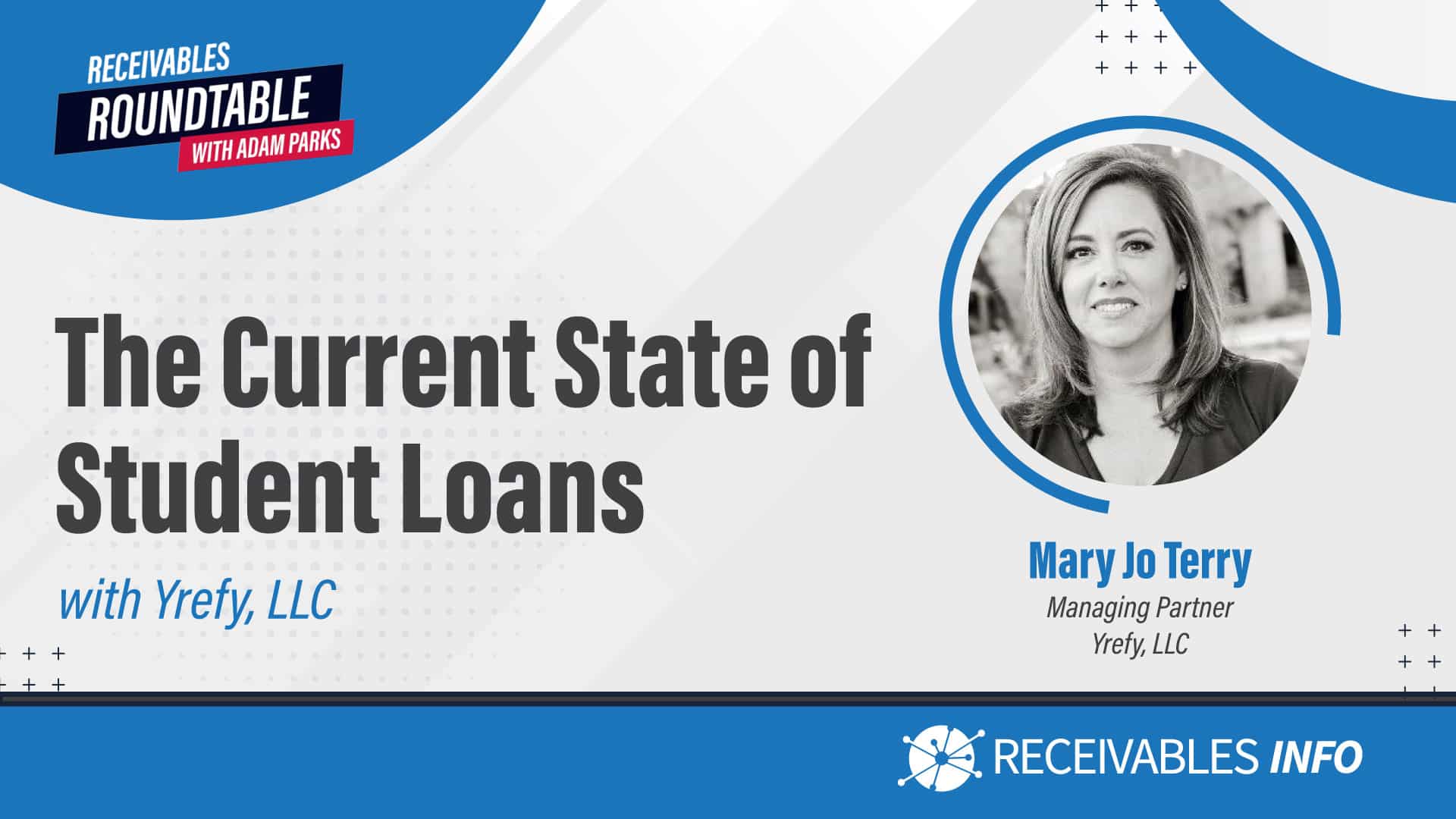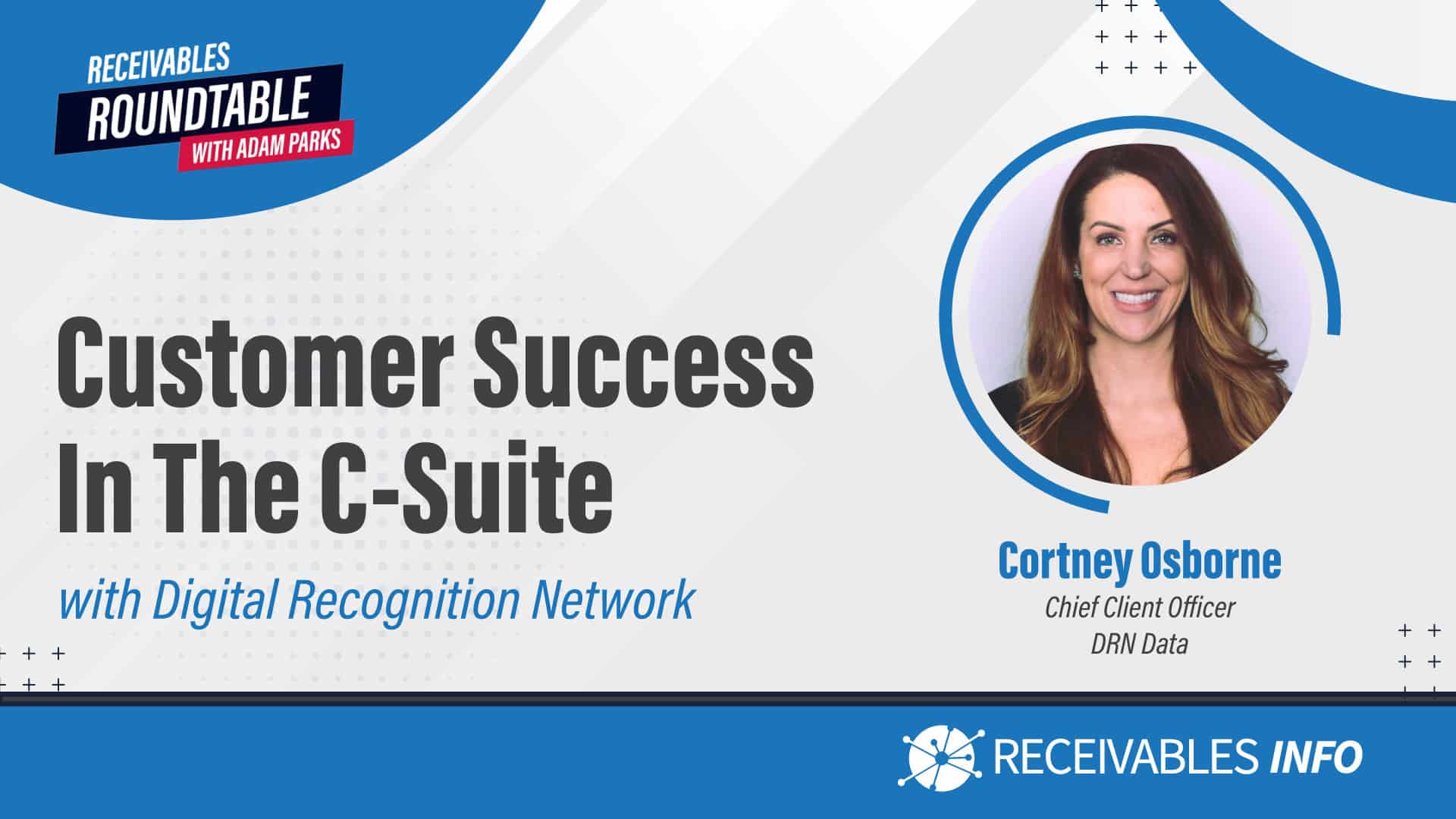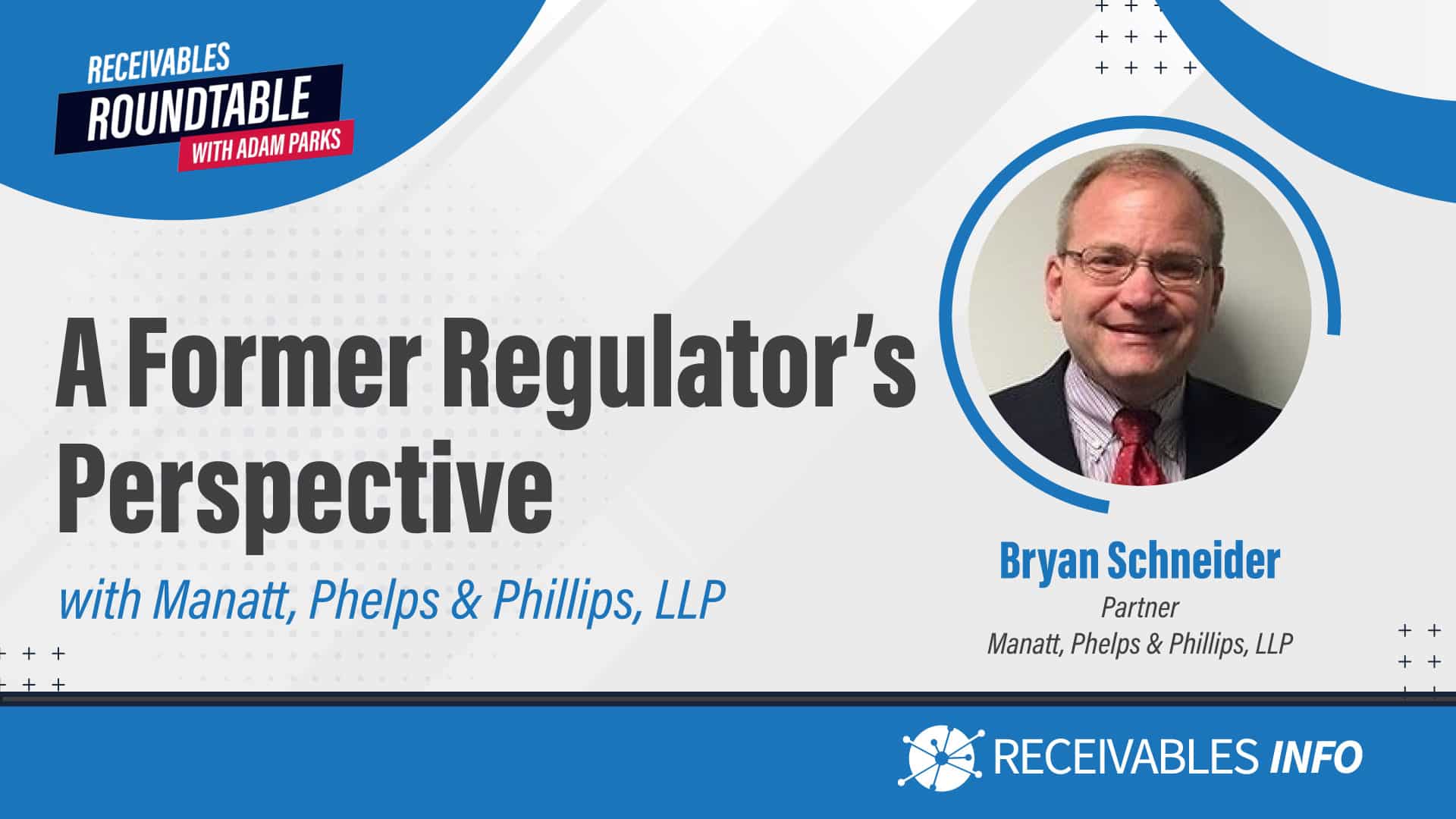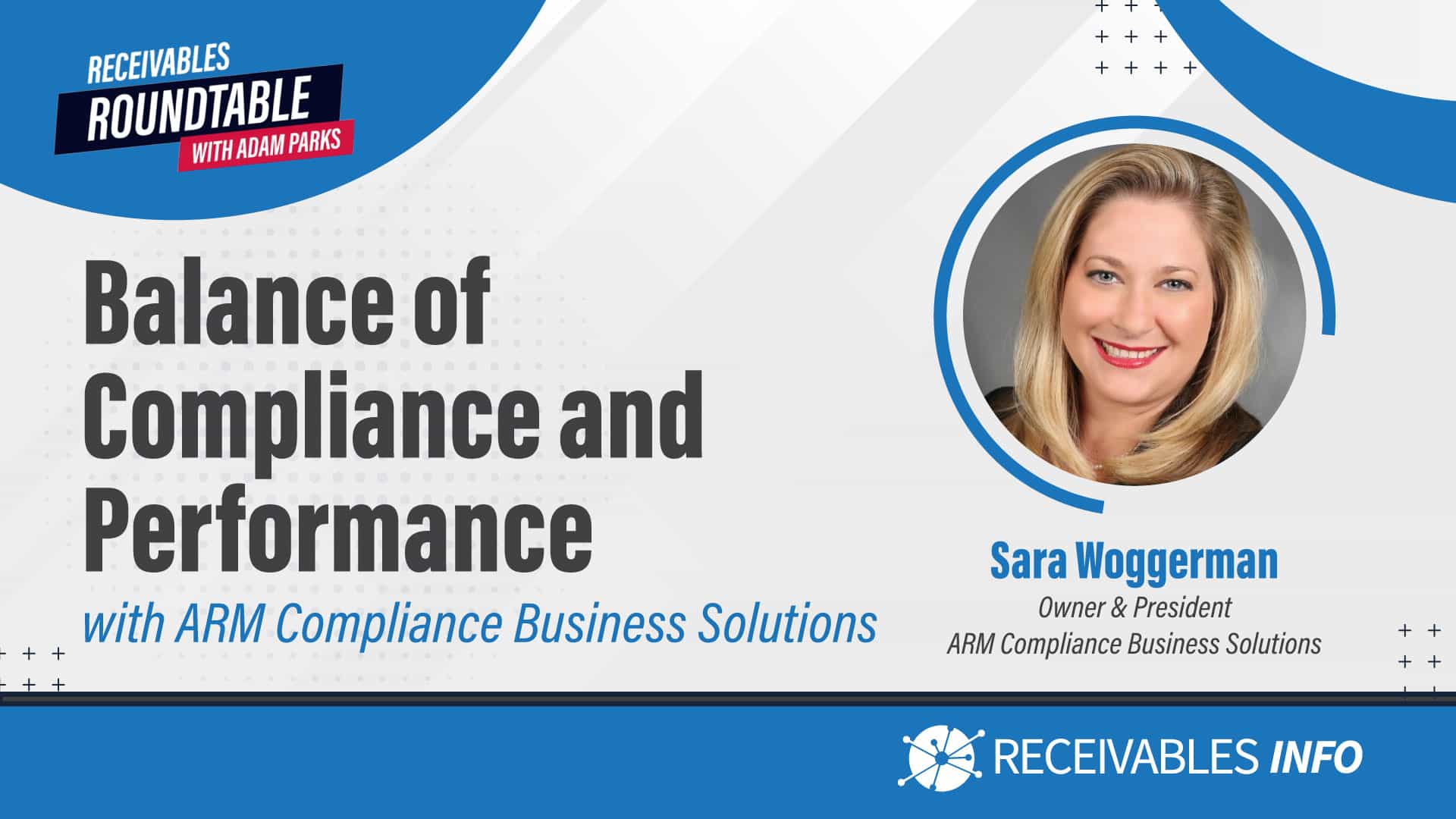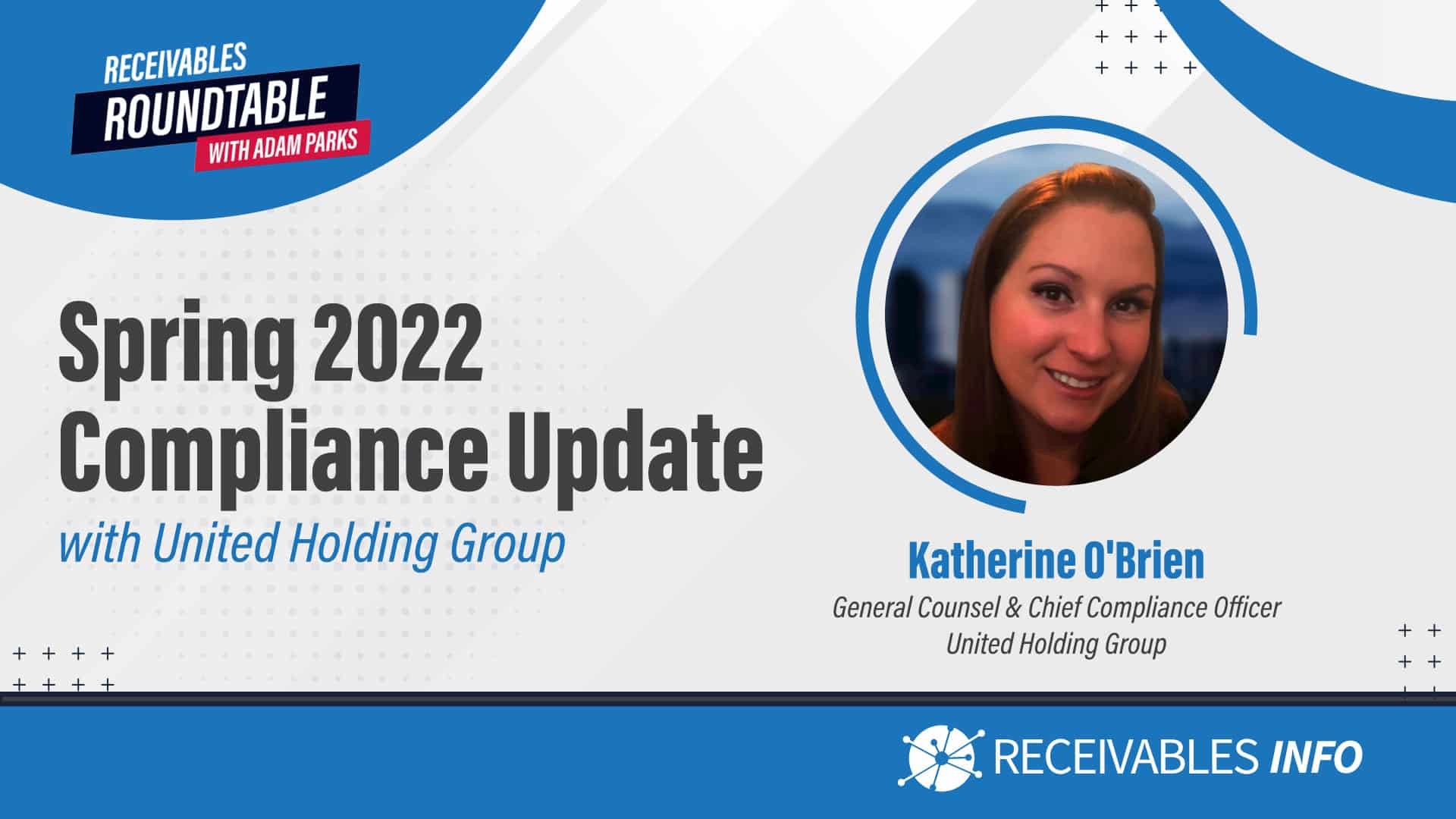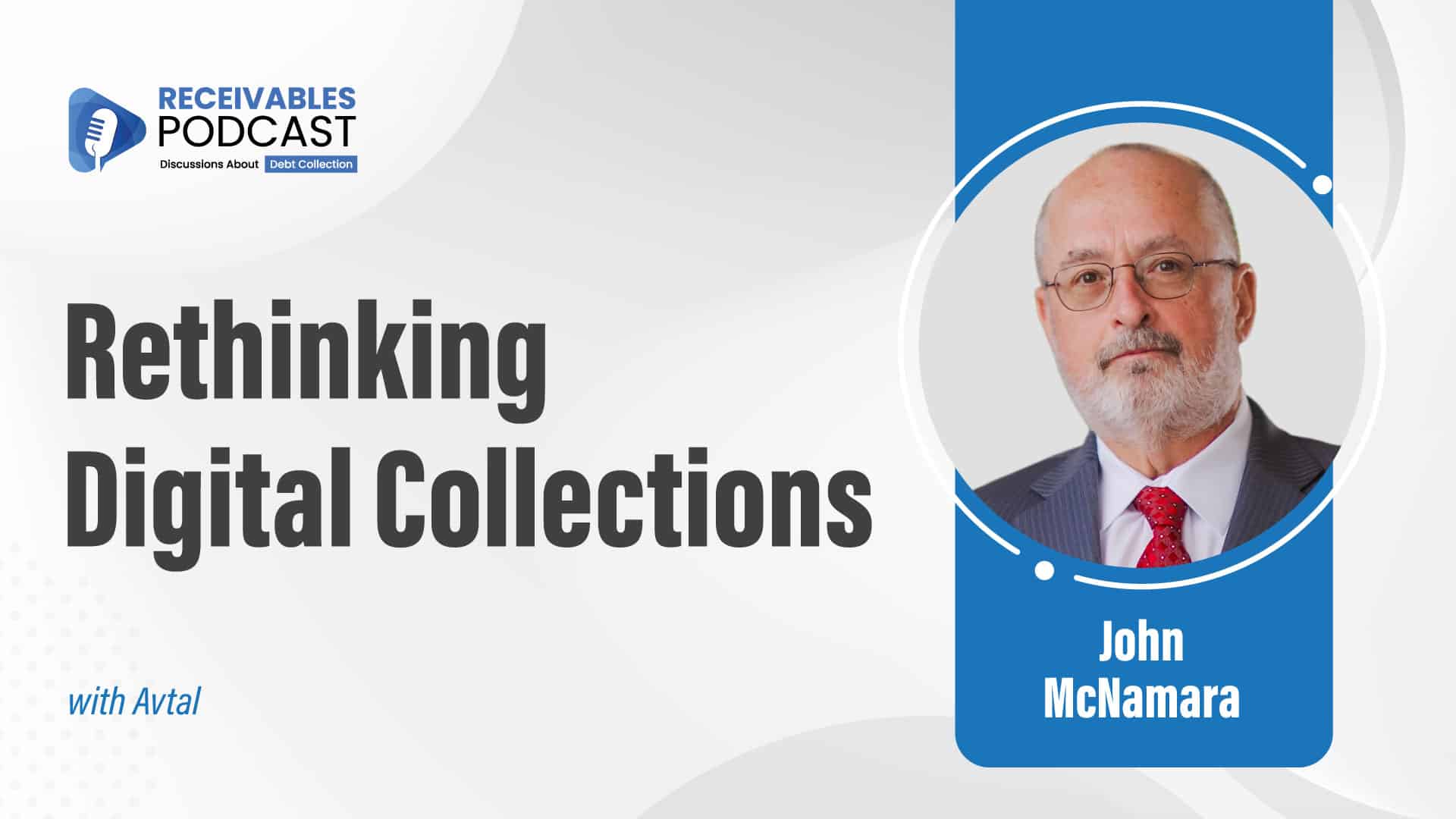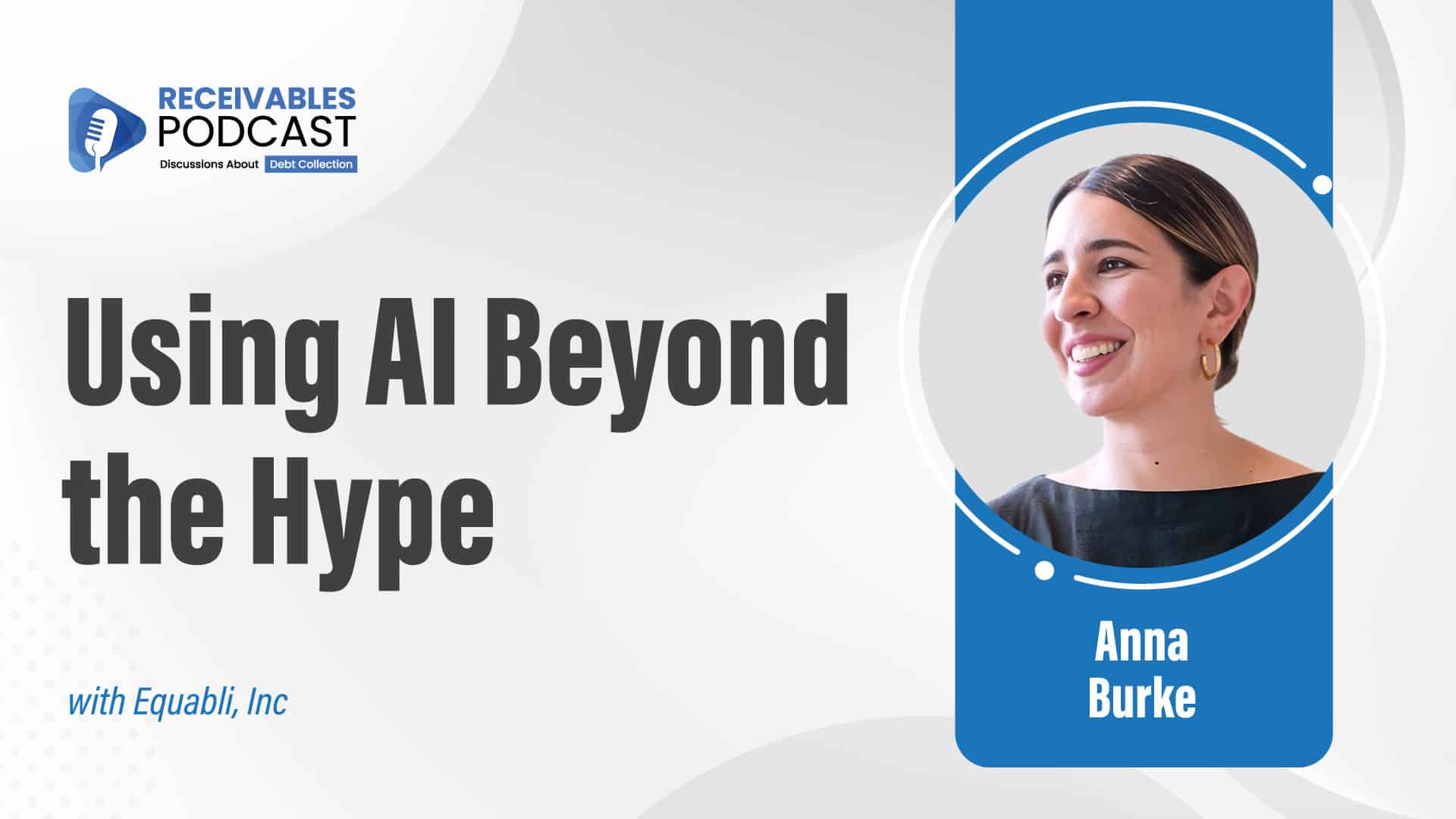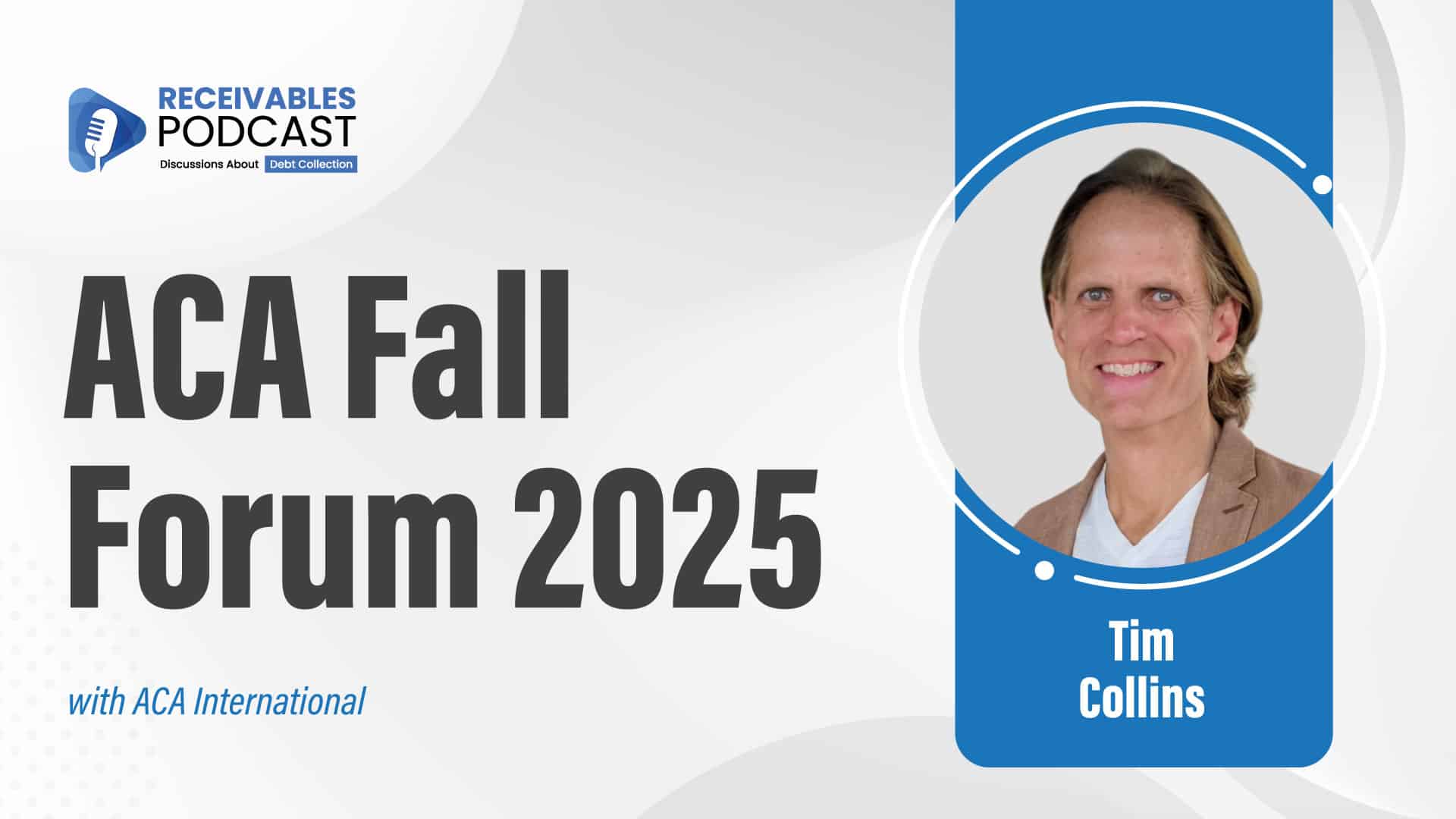Tune in for a chat with Dan Simmons, Sr. Director of Consulting - Financial Services at TransUnion. Dan covers recent origination and delinquency trends in Unsecured Personal Loans, Bankcards, Auto Financing, and Mortgages— and the effects those trends have had on lenders and borrowers.
Listen to Your Favorite Podcasts
Adam (00:01.242)
Hello everybody, Adam Parks here with another episode of Receivables Roundtable. Today I'm here with Mr. Dan Simmons, who is the Senior Director of Financial Services Consulting with TransUnion and one of the most knowledgeable data guys that I've had the opportunity to meet around the space. How you doing today, Dan?
Dan Simmons (TransUnion) (00:20.331)
Great, Adam, how are you today? Thanks for having
Adam (00:23.157)
I absolutely cannot complain. I've been following you since I watched you do the RMAI keynote presentation a couple years ago, and it inspired me to understand that there was just so much more data available for us to predict the future and to better prepare our businesses for what may be to come.
And so I learned a lot through that presentation. I'm really looking forward to getting an update as to, know, from your perspective, what's going on around the economy. But before we get to that, could you tell everybody a little bit about yourself and how you got to the seat that you're in today?
Dan Simmons (TransUnion) (00:55.937)
Sure, well, one of the reasons I love going to the RMAI conference is I actually got my start in third party collections. I worked for GC services for a little bit, or for a few years, I should say. And then from there, I worked in call centers for a few years in first party. And then I kind of wanted to get to do something else. So I went back to school and ultimately worked in consulting for about 10 years, worked in a lot
collections consulting as well as just data conversions, things like that. Did a lot of work overseas, which was a lot of fun. But about four years ago, there was an opportunity at TransUnion and sounded really interesting kind of reporting on trends within the consumer credit market. And that's when I came to the company and obviously how I got to know
Adam (01:48.996)
And it's been a lot of fun. really do appreciate it. But for anybody who lives under a rock, could you tell everybody a little bit about TransUnion and your role there?
Dan Simmons (TransUnion) (01:57.557)
Sure, so at TransUnion, my team is responsible for reporting on monthly and quarterly trends within the consumer credit market. So a lot of the reporting we do, of course, at TransUnion, we're one of the credit reporting agencies. So we have all the data related to trends in the consumer credit market. And then my team reports that information out both on a monthly and quarterly basis. So trends related to loan originations, balances, delinquencies, risk distributions, generations, et cetera.
across the main product types such as auto, bank card, unsecured personal loans, and mortgage.
Adam (02:34.768)
Sounds like you guys are the ones with the data and the opportunity to keep your finger on the pulse of how things are changing. I feel honored to have the opportunity to meet with the guy who's got his finger actually on the pulse and is willing to share some of what he's learned with the rest of us. So let me, I guess, kick it off, Dan, by saying like, what's new, right? Like we made a lot of predictions. We learned a lot from the 2023 survey. If you haven't filled out the 2024 survey yet, there'll be a link in the description below.
But outside of that, like not all the predictions that were in my mind came true, at least to this point in the year. What are you
Dan Simmons (TransUnion) (03:11.585)
I know coming into 2023, if we think back to last year, it was considered a near certainty that we would have a recession. Of course, that never materialized. And even in the face of the higher interest rates, our economy has been pretty resilient. We continue to see positive growth. I think we're forecast to grow right around 2 % when the numbers are released at the end of the second quarter. Consumer spending fuels about two thirds of our GDP number.
And that's continued to be positive, even though we have seen it slowing to some degree over the last few months. But it does remain positive, and that's really been helped by strength in the job market. We've seen, I think, 42 consecutive months of positive job growth, so that's really helped. And we still do have a low unemployment rate of 4 .1%, even though that has been ticking a bit higher. But ultimately, that's really helped consumers to deal with those higher balances.
that we've seen, even with inflation kind of trending lower, we do still see prices going up, and consumers remain a bit under pressure. So, one of the positives, certainly, we've seen is that we're likely to continue to see positive economic growth throughout the end of the year, even in the face of those higher interest rates.
Adam (04:28.954)
Which is just surprising to me, right? Like to see the economy continue as strong with as high an interest rate, I think the real estate prices have started to balance here a little bit, but any move in that interest rate, I think is gonna have a dramatic effect on what we see in terms of the cost of living, which is gonna drive rent, which is gonna drive consumer
Dan Simmons (TransUnion) (04:46.837)
You mind it?
Yeah, and I think, of course, recently with inflation still coming down to a degree and a little bit of weakness, at least in the unemployment rate going up a bit, that may lead to lower interest rates, at least when the Fed meets in September. It seems like the likelihood or the markets are, I think I read today that they were looking for 100 % chance of a rate cut in September. We'll see how that plays out. But it's trending in that direction.
Adam (05:18.66)
I mean, that would be fantastic, I think, in terms of economic stimulus, right? Being able to move money back around the economy, I think, would be of some value. But with the rise of the cost of goods, I think we're also seeing a rise in the delinquency, but also a reduction in consumer savings. People are having to take what they had and start to use that money for day -to -day living, which I think is going to cause some
some additional pressure on charge off rates in the future. But again, I think we were all predicting this massive wave that still seems to be stuck in the pipeline. It doesn't look like it's gone away, but it looks like the wave has not crested.
Dan Simmons (TransUnion) (06:01.537)
Yeah, we've definitely, of course, we've definitely seen delinquency rates trending higher, you know, since the pandemic, lenders became a lot more aggressive loaning to those below prime consumers. And we saw those rates trending higher. You know, as we talk about balances, the growth in balances, we've seen a pretty significant increase in monthly debt obligations for consumers. So consumers have increased balances really across all products.
And what that's led to is higher monthly payments across every risk tier. And one metric we look at a lot at TransUnion is it's called AEP or aggregate excess payment. It measures the payment amount beyond the minimum due that a consumer is making. So, for example, if I have minimum payment across all products like my mortgage, let's say my auto loan, my bank card, unsecured personal loan, let's say that's $1 ,000.
and I pay $1 that means I have a positive AEP of $200. As that number starts to trend lower, and we've done a number of studies on this at TransUnion that shows that as that number starts to trend lower towards either a flat number or to go negative, that's a real indicator of a consumer who is in some trouble and likely to go delinquent. What we've seen in the overall market is
a smaller percentage of consumers able to make payments beyond the minimum. So what it tells us, of course, is that a segment of the population is under some pressure. And we've definitely seen, as we look to different delinquency rates across products, we've seen a rise in delinquency rates across just about every product. think the only exception to that role would be unsecured personal loans, which we've seen a recent decline over the past year. But certainly if we compare to where we were pre
across all products we are seeing elevated levels of delinquency.
Adam (07:58.512)
Again, that not too surprising in terms of what we're seeing from a a valuation standpoint in the receivables market, right? The higher the volumes, the less the collectible, the lower the collectibility, obviously, the lower the price. And so that kind of relationship, I think will remain to be true. I'm interested to see how auto loans start to have an effect here was my observation that throughout
the pandemic and when student loans were being forbade that you had people were buying more expensive vehicles, right? The prices were driving and now there's a lot of people that are upside down in those loans because as the auto prices, right? For the value of the vehicle has started to dip but you own it for so much more. And then stretching out to seven year terms is also going to cause a longer term pressure on those consumers because they're kind of overbought into a negative equity asset.
Dan Simmons (TransUnion) (08:54.655)
Right, and I think I can share a couple of slides here related to auto that you just mentioned. If I can get to my
Adam (09:06.244)
The auto portion of it, I think is interesting. I think it's a great early indicator of how consumers are going to behave, right? Like they got their rent and their car and they may even pay their car before their rent. But looking at the prioritization of how a consumer views the debts in front of them or the obligations in front of them, I think can vary over time.
Dan Simmons (TransUnion) (09:29.441)
Adam, we may have to splice in the, yeah, okay. So to answer your question on auto delinquencies, we've definitely seen those auto delinquency rates trending higher. Overall in the auto market, of course, we've seen those originations have trended lower. At least in year over year terms, they're pretty flat. But if we compare to where they were pre -pandemic,
Adam (09:32.612)
That's okay, we'll drop in the slide for you.
Dan Simmons (TransUnion) (09:53.409)
We're about 10 % below where we were pre -pandemic. And that has a lot to do, of course, with affordability. As you mentioned, there's lack of inventory. We have seen some growth in originations, particularly within super prime. We do believe there's a lot of pent -up demand within super prime originations for new vehicles. But as you talked about the vehicle prices definitely coming out of the pandemic, we saw a pretty dramatic increase in vehicle prices, both for new and used vehicles.
Over the last year or so, we've started to see those prices easing, particularly within the used vehicle market. think through Q2, we've seen those prices come down. I think it was 3 .7%. So we've started to see those numbers coming down. And that's helped, of course, with those monthly payments. Now, in terms of delinquency rates, for Q2 numbers, believe our totals were at, we were right around
I think it was 1 .3 % on delinquency, 1 .26%, excuse me, for Q2, our delinquency rate for Q2 -24 was 1 .27%. That's the highest level we've seen since 2009. So we have seen that delinquency rate trending higher, highest Q2 rate we've seen since 2009, I should say. When we break out the delinquencies, we also take a look at them by vintage curves.
where we look at what's the performance with the new vehicles as well as used vehicle vintages. We see that new vehicle vintages are showing strength. We don't see really any weakness there that's causing delinquency rates to go up. It's primarily within the used vehicle market. And as we kind of drill down within that, it's really coming from those near prime and subprime consumers who have payment amounts over $500. We've seen pretty significant weakness over the last
year or so relative to where we were pre -pandemic for those same types of consumers. as we talk about consumers kind of getting squeezed, those AEP numbers coming down, that's having something to do with the higher delinquency rates we're seeing in that segment of the
Adam (12:06.948)
Based on the timeline that you talk about for the consumer, I wonder how much of that is driven by the reinstatement of their student loans, right? Like the financial stress, it's been, let's call it a year or so that they've started to kind of slide on the auto side, I'm wondering how close that ties to the change from a student loan
Dan Simmons (TransUnion) (12:27.829)
Yeah,
Adam (12:29.328)
Another big $500 payment, right? That comes up out of nowhere and is kind of reintroduced into the life cycle after whatever it was, three, four years of being delayed. I'm sure that I don't see how that could not have an effect on the consumer's well -being.
Dan Simmons (TransUnion) (12:45.217)
I'm sorry, Adam, I think I didn't quite hear you though that question. Was that on student loans?
Adam (12:49.712)
Oh, yeah. So the tie of the auto statement to the student loans, right? So as the auto started to slide, it was about a year ago and the student loans were reinstated about, I guess it was a little bit more than a year ago. I'm wondering how close those two things correlate because you reintroduce this large payment of let's call it $500 a month into the consumer's life. And that's going to have an effect on how and where they're able to spend that money. And it's going to have an effect on the ratio of how much they're able to pay beyond that minimum
Dan Simmons (TransUnion) (12:54.712)
sure, sure.
Dan Simmons (TransUnion) (13:18.333)
Absolutely. We did a study last year, the payment shock of the student loan, meaning consumers are going to have to start paying these back. And of course, we've had a there have been some changes in the laws where I think consumers are not currently being reported on their student loans. The let me back up on that. Let me let me start over. So that's a great question about student loans. As we as we talk about that,
Of course, the requirements came in October of 2023 for consumers to have to start making payments again on their student loans. However, they're not going to be reported to the credit bureau until October 24, so until a few months from now. So that means that even if consumers are not making payments today, it's not being reported as delinquent to the credit report. So we have a report where we take a look at the percentage of consumers who've been making payments.
on their student loans in this period where it's not being reported to the Bureau. And consumers are making, about 52 % of them are making payments right now on their student loans. So we've yet to see that significant impact of that payment shock, you know, kind of fully across the board. But the number of consumers making those payments are trending higher. And certainly to your point, that is going to have an impact on consumers as they're gonna have to, on average, I think the...
average student loan payment is around $300. So that's something they'll have to figure out, which bills they're paying and how they're going to manage that additional payment coming into play.
Adam (14:55.844)
I mean, it makes a lot of sense when you add another bill into the mix, right? And a fairly significant one for a lot of American homes. It's gonna have some sort of an impact. So it'll be interesting to see how that starts to shake out and how the application of the credit card usage, right? Have you seen anything in terms of usage limits starting to rise, people starting to use more of their available credit?
Dan Simmons (TransUnion) (15:03.85)
Absolutely.
Dan Simmons (TransUnion) (15:19.765)
We have seen, I think within, certainly within Bankhard, we've seen an increase in utilization rates. But along with that, of course, we've also seen, or we've seen balances rising, I should say, but we've also seen those credit lines increasing too. So overall, the utilization rates have remained relatively stable compared to where they were pre -pandemic. One thing we are seeing quite a bit of though, is lenders becoming more conservative at the time of origination.
We've really seen this across, certainly across unsecured personal loans in particular, as well as bank card. So overall, we've seen the total number of originations trending lower, and we can share some charts with you here, some long -term charts looking at the total volume. We'll start with unsecured personal loan originations. We've seen them kind of trending down off their all -time highs, but they're flat in year -over -year perspective. Now, as we look at
breakout by risk tier, what we can really see is that the percentage of those loans, as we've seen the total number of loans coming down over the last couple of years, the percentage of those loans that have gone to super prime consumers has increased pretty dramatically. It's up about 55 % over the last couple of years. Conversely, we've seen a decline in those loans that are going to sub prime. So just to summarize, lenders
reducing the total number of originations with those originations that they are making. A higher percentage of them are going to the less risky consumers in super prime and a lower percentage going to those consumers in sub prime. And unsecured personal loans, this is the one product we've actually seen where delinquency rates are trending lower in year over year terms. They do remain elevated in long term comparisons, but we have started to see those delinquency rates trending downward.
In addition, we've seen recent improvement in their vintage performance. Ultimately, that's slowing the rate of charge off. For those of you who rely on, say, fintech placements, you're likely to see those totals trending lower as those of the lenders who've really become more conservative
Adam (17:33.656)
I think lending is a risk versus reward probability. And so with the uncertainty in the marketplace, I think there's going to be a continued tightening of the availability of credit. And I think also as interest rates are rising, you the you've got a higher payment required when somebody's buying a car or taking out a loan. And with that higher payment, I think less people ultimately qualify for it. So I think you've got a function of the interest rate and you've just got a function of the banks,
trying to tighten and lessen their risk, especially with all these stress tests going around in the banking system, right? And such a close eye, think finding that risk versus reward balance is really what they're after.
Dan Simmons (TransUnion) (18:19.403)
again.
Adam (18:19.598)
It'll be interesting to see how the rest of the year starts to shake out. In an election year, I feel like there's always a little bit more chaos and turmoil than in other years. It feels like it hasn't really quite started yet from an economic standpoint. The economy is performing well. Stocks are reaching all time highs. But how long can that really last? All good things must come to an end.
Dan Simmons (TransUnion) (18:43.777)
Yeah, and as you say with the being an election year as we touched on the student loan, you know, we've seen so many challenges to it as well as loan forgiveness. you know, anybody's guess how that'll kind of play out going forward. But what we know at this point is that those payments are going to have to be made as of October 2024. And then we'll start reporting to bureaus just to follow up on the the lenders becoming more conservative.
We've seen that same thing with Bankart as well. Not pulling back to the same degree, or not kind of focusing as much of the growth in super prime as we had seen within unsecured personal loans. We haven't yet seen the improvement in delinquency rates or vintages within Bankart. Those delinquency rates still remain pretty high and are likely, you know, if we talk about our forecast from TransUnion through the end of the year, I think we forecast.
Bank card delinquency rates, serious delinquency rates at 90 plus past due to be at 2 .85 % by the end of the year. I think they ended last year like 2 .65%. So we do see those rising through the end of the year.
Adam (19:56.068)
feels like a fairly significant rise when you think about it as a percentage, right, of the previous delinquency rate. So it sounds like it is a little bit on the move here, and that's kind of what you guys are seeing into the future. I look forward to an opportunity to continue this discussion and continue to look at how some of these trends have changed over time so that this industry can continue to learn and get a better understanding of the overall economic environment that ultimately drives us
Dan Simmons (TransUnion) (20:23.679)
Yeah, absolutely. Appreciate you having me today. This has been a fun discussion. Really appreciate it, Adam.
Adam (20:29.688)
I definitely appreciate you for those that are watching. If you've got additional questions you'd like to ask Dan or myself, you can leave those in the comments on LinkedIn and YouTube and we'll be responding to those. Or if you have additional topics you'd like to see us discuss, you can leave those in the comments below as well. And hopefully I can get Dan to come back at least one more time to help me continue to create great content for a great industry. until next time, Dan, I really do appreciate your insights. This was a lot of fun for
Dan Simmons (TransUnion) (20:52.969)
All right, thanks again, Adam. Really appreciate it. Happy to come back anytime.
Adam (20:56.748)
Absolutely, and for those of you watching, we'll see you all again soon. Thank you so much, everyone.
Dan Simmons (TransUnion) (21:00.405)
Thank
About Company
We’re committed to ensuring every individual is reliably represented in global commerce so consumers and organizations can transact with confidence and achieve great things. We call this Information for Good®.


